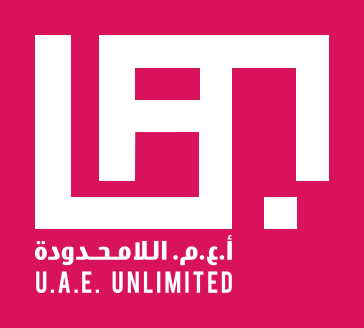Bayn: the In-Between considers the partition between the personae which dwell in our past, and our present incarnations which have experienced a succession of reconstructive events to arrive at a new place, with a reformulated identity. This transitive state of culture and identity, as well as the frontiers of our physical and ephemeral spaces, is an inclusive timeline bounded by the establishment of the UAE, and reaches forward into the country’s future as a self-determined, though as yet “unfinished” state.
A cyclic separation, transition, and incorporation, aims to preserve cohesion amidst fluctuating, sometimes disparate parts of a social system, while affecting a transfiguration upon its traditional foundation. This transformation may be internal to the UAE, or within an individual, or it might be external, as with individuals who transplant from their base culture to be integrated into the Emirati culture. While experiencing their own internal, personal flux, inhabitants undertaking these relocations, will ultimately influence and occasionally fuel, the changes in their adopted cultural framework.
Emerging Emerati curator Munira Al Sayegh, has assembled artists from the UAE, Iraq, Jordan, and Syria, who emulate this recursive process of self-critical examination and reintegration of new ideas, in the formation of their artwork. In collaborative exploration with Al Sayegh, artists across a broad spectrum of disciplines, investigate the physical and social landscape by employing a methodology which questions assigned boundaries and identities. The resulting matrices establishes a substantive, but undefined transitive space and occupy a fluid middle ground undergoing a perpetual reconfiguration. While remaining engaged in continual dialogue with an evolving, often paradoxical, culture, each artwork hold its own plot on a fluctuating landscape and echoes the thematic underpinning of the exhibition.
A cyclic separation, transition, and incorporation, aims to preserve cohesion amidst fluctuating, sometimes disparate parts of a social system, while affecting a transfiguration upon its traditional foundation. This transformation may be internal to the UAE, or within an individual, or it might be external, as with individuals who transplant from their base culture to be integrated into the Emirati culture. While experiencing their own internal, personal flux, inhabitants undertaking these relocations, will ultimately influence and occasionally fuel, the changes in their adopted cultural framework.
Emerging Emerati curator Munira Al Sayegh, has assembled artists from the UAE, Iraq, Jordan, and Syria, who emulate this recursive process of self-critical examination and reintegration of new ideas, in the formation of their artwork. In collaborative exploration with Al Sayegh, artists across a broad spectrum of disciplines, investigate the physical and social landscape by employing a methodology which questions assigned boundaries and identities. The resulting matrices establishes a substantive, but undefined transitive space and occupy a fluid middle ground undergoing a perpetual reconfiguration. While remaining engaged in continual dialogue with an evolving, often paradoxical, culture, each artwork hold its own plot on a fluctuating landscape and echoes the thematic underpinning of the exhibition.




